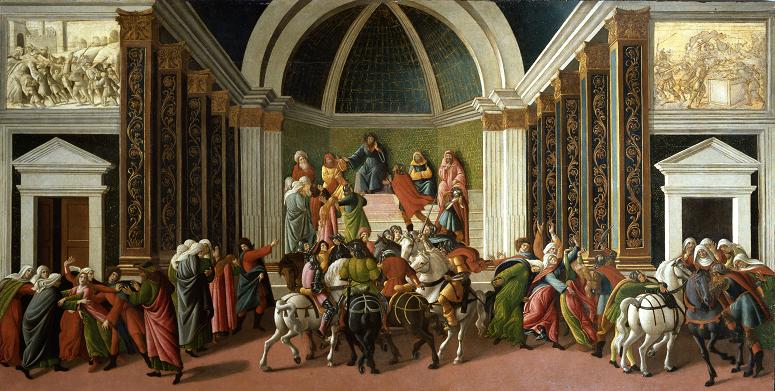Accademia Carrara, Bergamo. The Accademia Carrara is an art gallery and an academy of fine arts in Bergamo, Italy. The origins of the art gallery lie with the Count Giacomo Carrara, a wealthy collector and patron of the arts, who left a generous legacy to the city of Bergamo at the end of the 18th century.After the Count's death, in 1796, his properties were managed by a nominated commissary until 1958, when the Comune di Bergamo took over direct supervision. In 1810, a new building in the neoclassical style was constructed, the project being undertaken by the architect Simone Elia, a pupil of Leopoldo Pollack. The museum has continued to augment its collections both with purchases and donations. As of 2006, it possesses 1,800 paintings dating from the 15th to the 19th century, and by artists including Pisanello, Botticelli, Bellini, Carpaccio, Mantegna, Raphael, Moroni, Baschenis, Fra Galgario, Tiepolo, Canaletto and Piccio. Besides paintings, there are drawings and prints, bronzes and sculptures, as well as collections of porcelain, furniture and medals. In 1793, at the same time as the public opening of his gallery, the Count Giacomo Carrara desired that drawing and painting courses be initiated in the same place. The school, which was located in the same building as the art gallery until 1912, now has its own premises nearby. Since 1988, it has been an officially recognized Accademia di Belle Arti. In 1991, the modern art gallery Galleria d'Arte Moderna e Contemporanea was opened on the opposite side of the road in a partially restored 14th-century monastery that had previously been used as a barracks. Presently, it has ten exhibition halls, on three floors. Since the purchase of the Gianfranco and Luigia Spajani collection in June 1999 the permanent collections have contained works by Italian and foreign artists of the 20th century including Boccioni, Balla, Morandi, Campigli, Casorati, Savinio, De Chirico, Kandinsky, Sutherland, and Manzu. The directors-general at the Accademia Carrara have been, in chronological order, Giuseppe Diotti, Enrico Scuri, Cesare Tallone, Ponziano Loverini, Luigi Brignoli, Achille Funi, Trento Longaretti, Pierluigi De Vecchi, Mario Cresci and Maria Grazia Recanati.
more...






